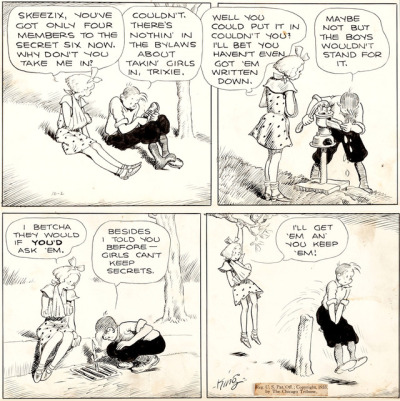LizzieMaine
Bartender
- Messages
- 34,210
- Location
- Where The Tourists Meet The Sea
In the next volume, we'll see Trixie give Skeezix his first kiss, marking the beginning of his career as a bumbling teen, which will consume the latter half of the thirties. He will, unfortunately, turn his attention to sedate, boring Nina -- who he will eventually marry. But Trixie will go on to a glamorous career as a radio singer, and eventually will serve in the war as a WAC. She hasn't been seen in the strip, as far as I know, since 1957, when she unexpectedly showed up for a visit, causing boring, sedate Nina to seethe with jealousy.
If I was writing the strip today, I'd totally bring her back and give 95-year-old Skeezix something to think about.
If I was writing the strip today, I'd totally bring her back and give 95-year-old Skeezix something to think about.



